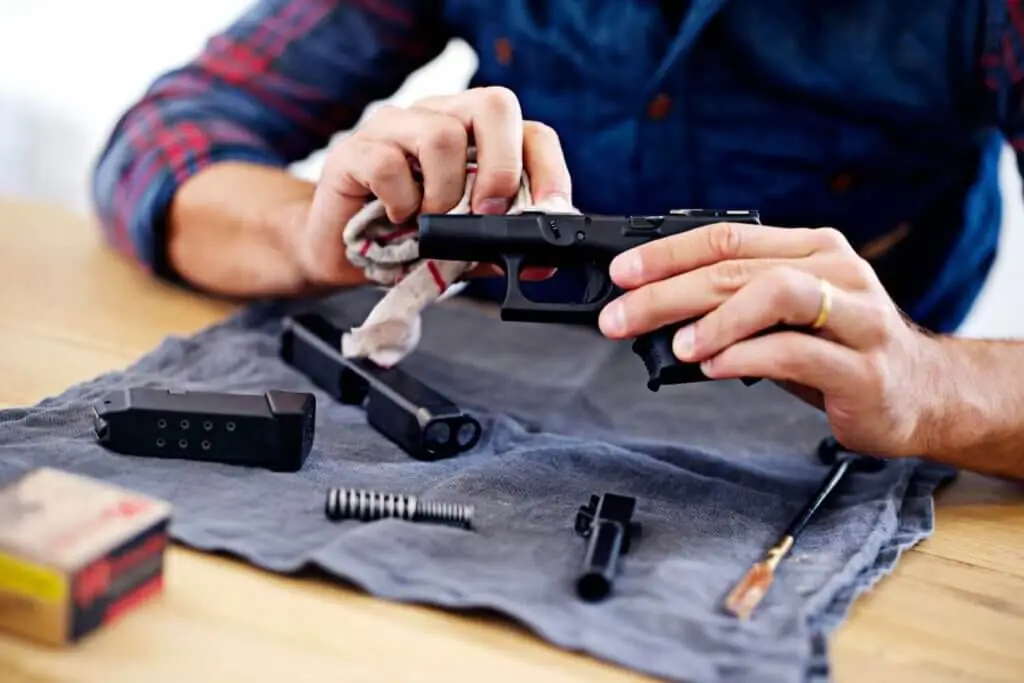No products in the cart.
JOIN OUR MAILING LIST for special offers!
Subscribe to our email list to find out of new sales and restocks – Don’t worry, we hate spam as much as you do and will only send you the best deals and reads.
Cleaning a gun is part of basic gun maintenance, and it’s especially rewarding when working on DIY firearms. When you take the time to build a custom firearm (or modify a commercial model to suit your shooting needs better), you’re developing detailed knowledge of the gun you’ll be using. This makes it a better choice for the range, everyday carry, or self-defense while also giving you a sense of satisfaction and helping you maintain your privacy against the intrusive paperwork that comes with commercial firearms transactions. Proper gun usage and care isn’t just a privilege of your Second Amendment rights but also the responsibility of every gun owner.
Safety always comes first with firearms. That means you need to take the necessary precautions to ensure you’re protecting yourself, those around you, and your weapon throughout the process.

Cleaning a gun usually doesn’t require complete disassembly. A simple field stripping of the firearm is sufficient to let you get to the areas you need to clean during regular maintenance. If you have a commercial firearm and you aren’t sure how to field strip it, refer to your owner’s manual. With DIY guns, you built the weapon with your own two hands, so you got this.

Once you get the hang of it, cleaning a gun can be an enjoyable part of the hobby that takes less than an hour. As you get more familiar with your weapon and the process, keep these tips in mind.
Since 2013, we’ve had you covered with gun parts and accessories that make customization or building DIY firearms easier. Sign up for our newsletter to get the latest deals delivered to your inbox first. Order your parts from JSD Supply today.

As I’m sure you have heard by now, our industry and your rights are under attack by our own government officials. In an effort to help preserve our freedoms and continue bring you the quality products you’ve become accustomed to, we are selling a JSD Branded T-shirt to help the battle with those trying to force legislation without a vote. Click this button to find out more.
Subscribe to our email list to find out of new sales and restocks – Don’t worry, we hate spam as much as you do and will only send you the best deals and reads.
1052 New Castle Road
Prospect PA 16052
Customer Service Hours:
Monday-Friday 9am-5pm EST
Phone: (724) 213-9721
Email: [email protected]
© JSD Supply 2025 | Sitemap